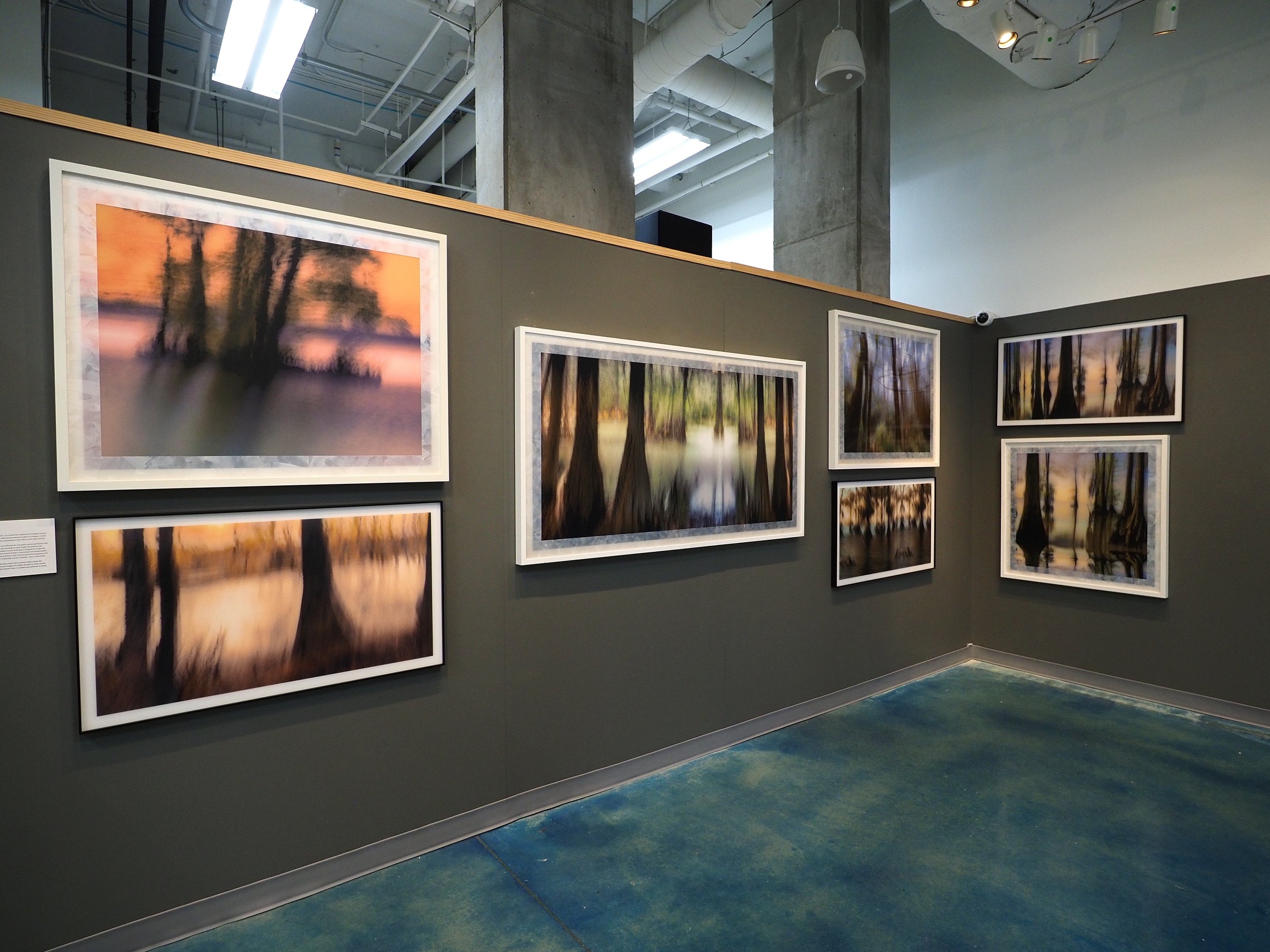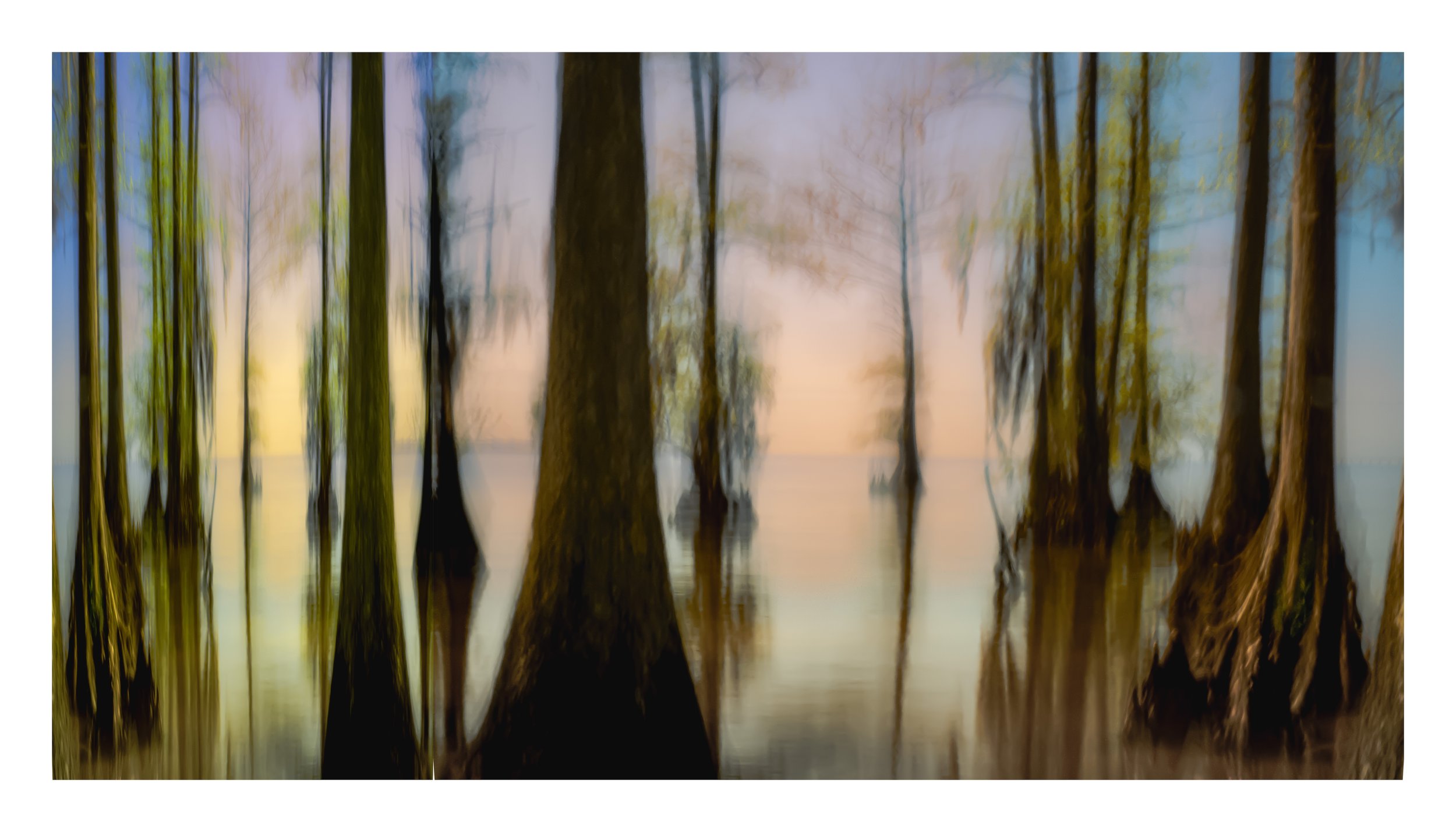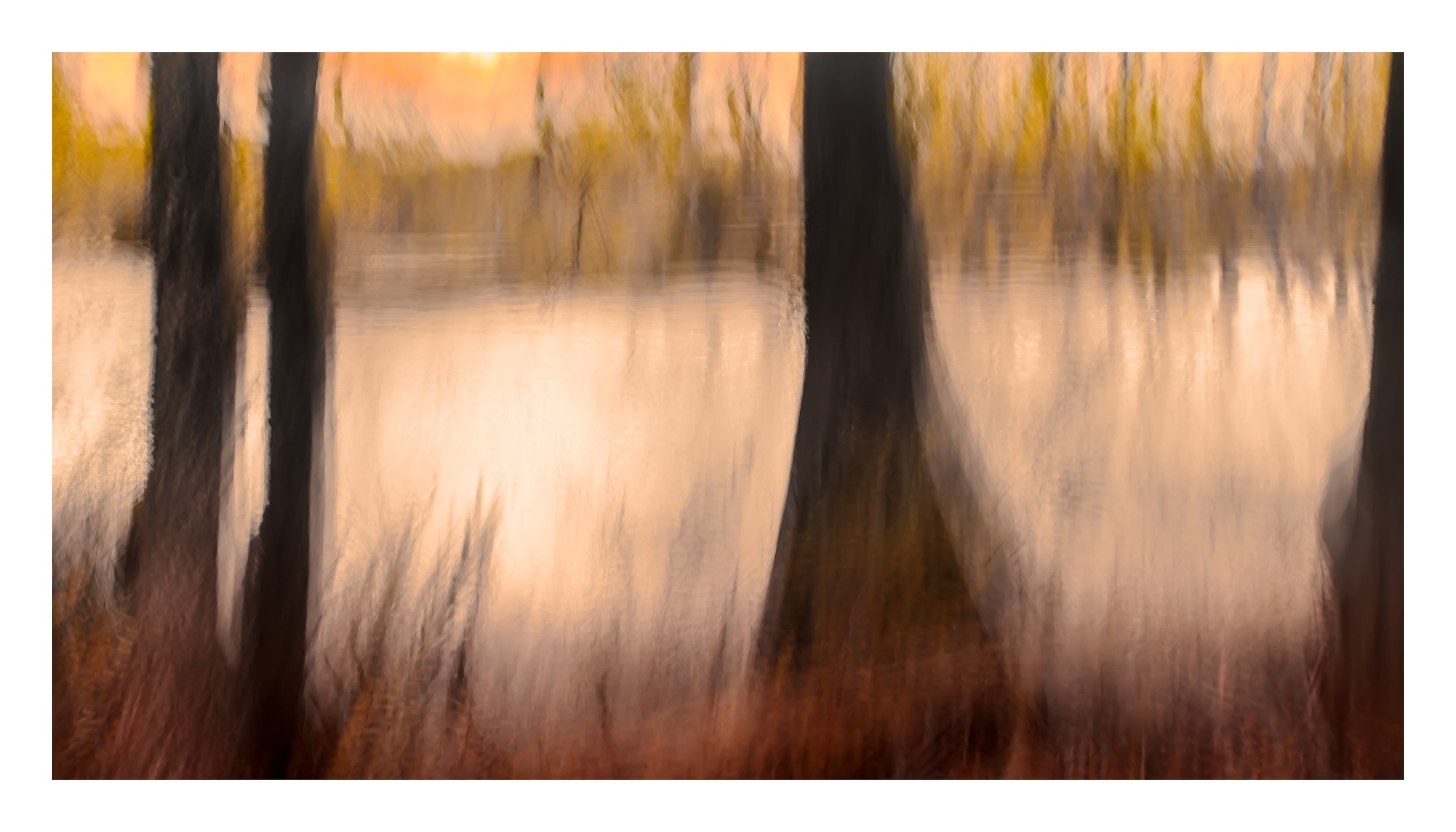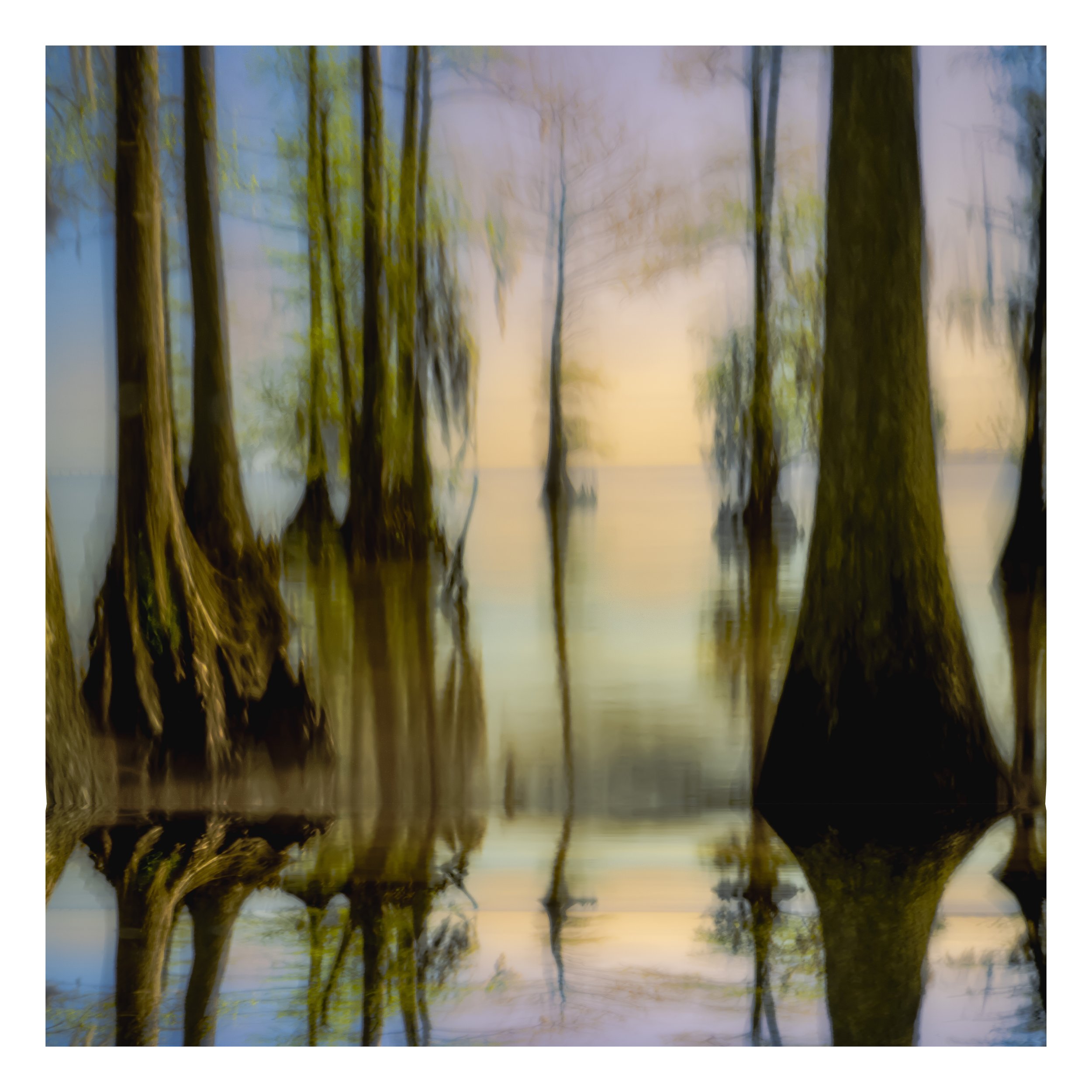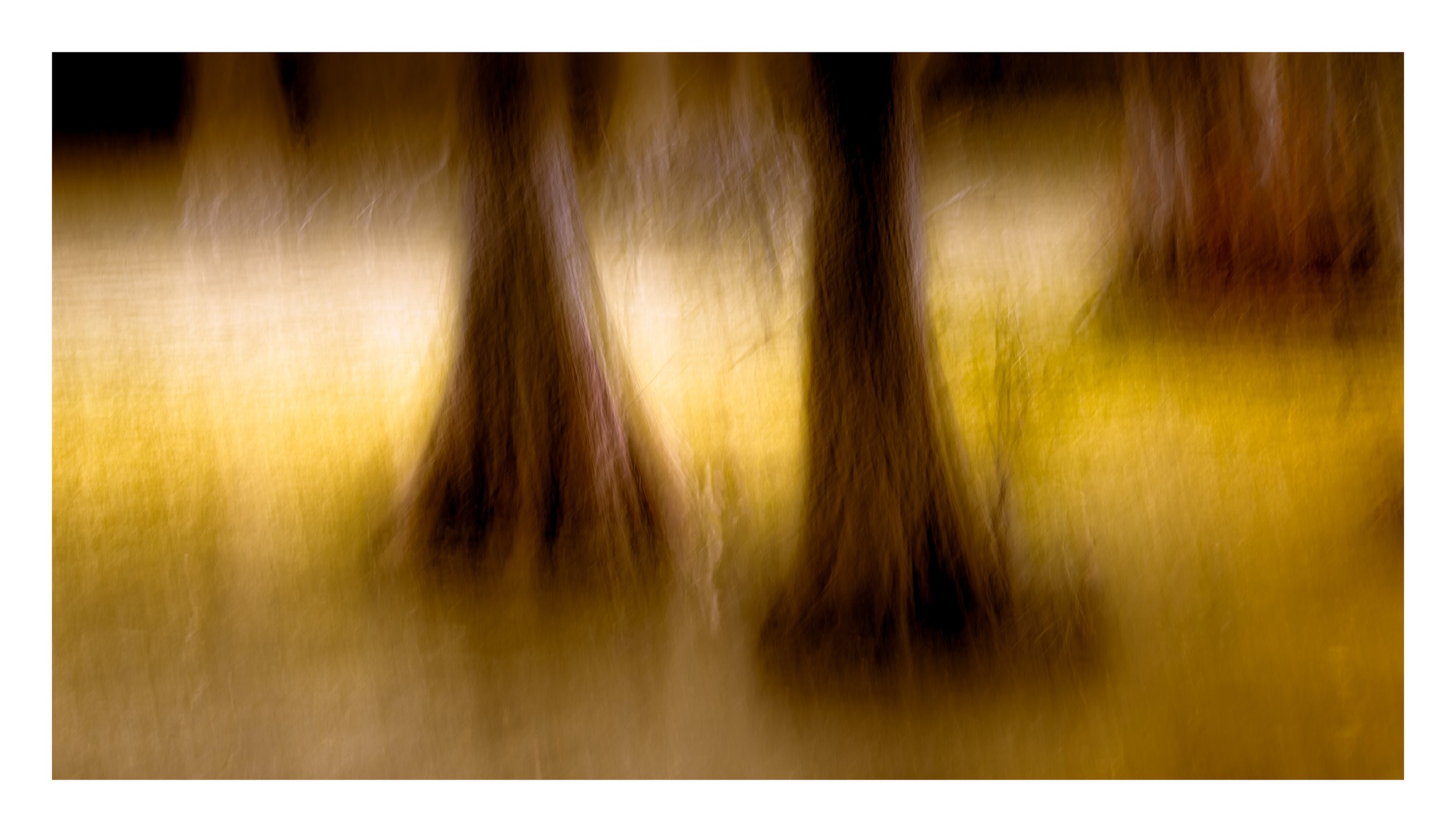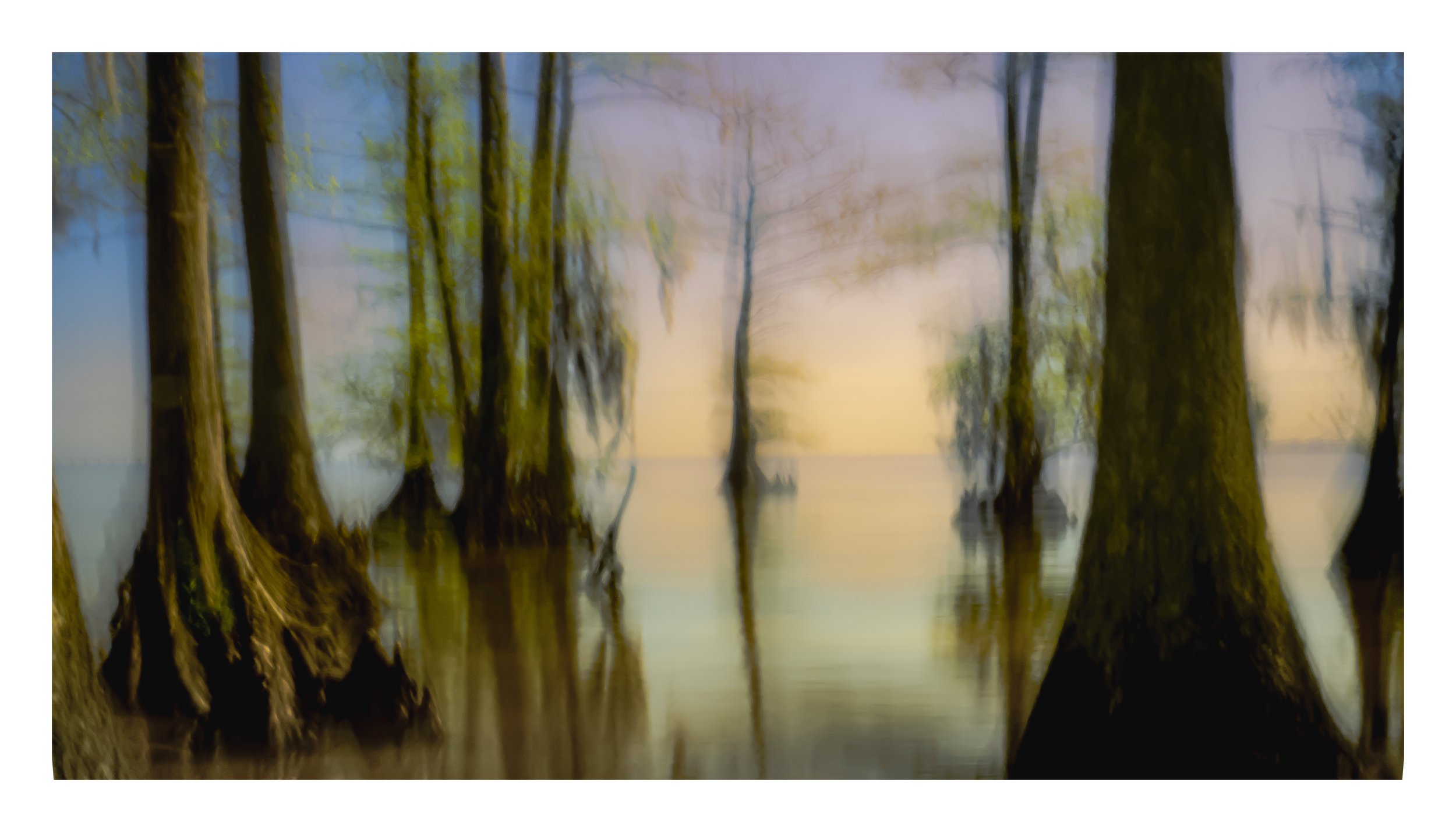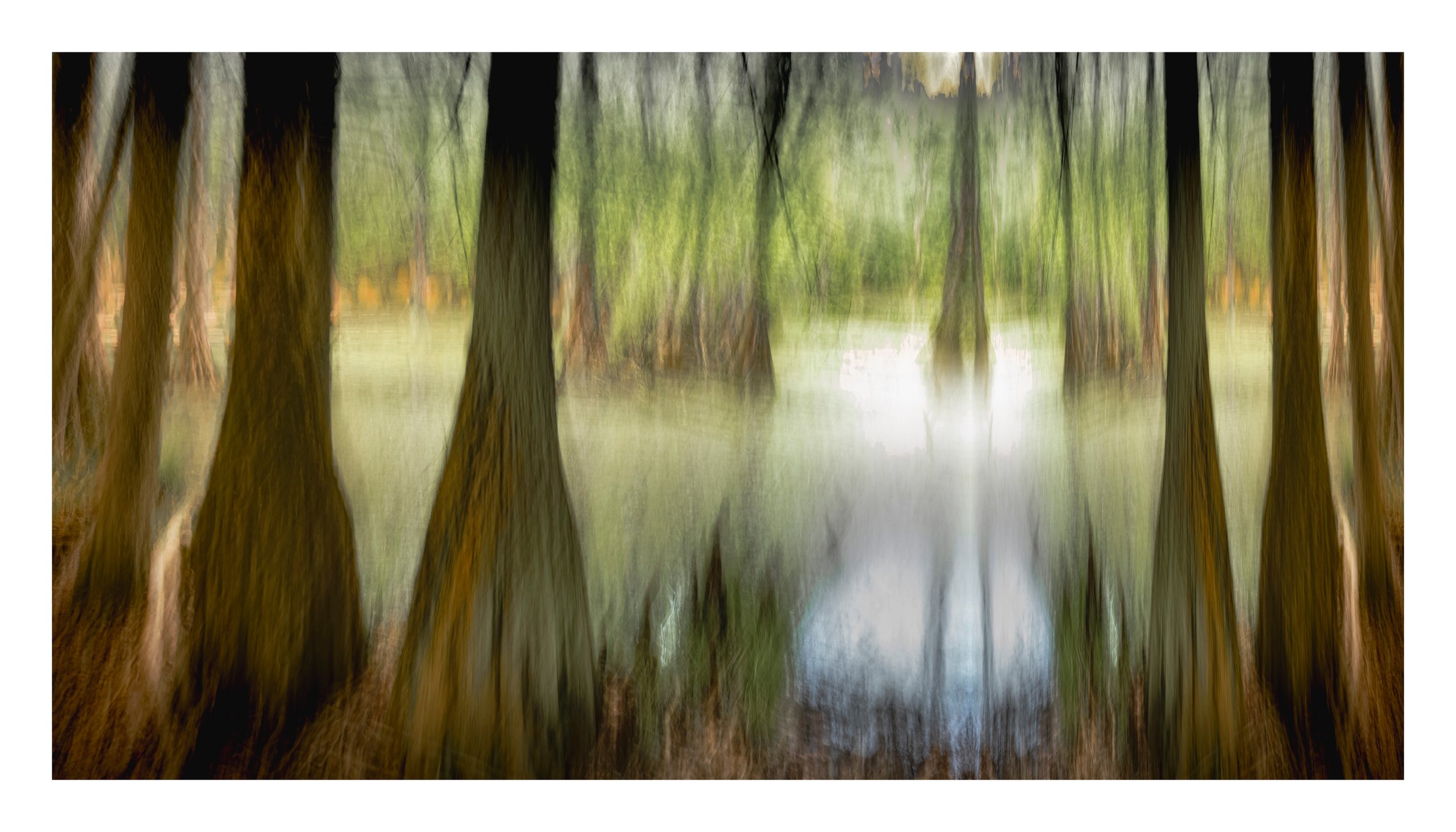Swamp: During an artist residency in eastern North Carolina this spring, I re-visited the mysterious ecological spaces of cypress swamps, millponds, and black creeks. My base as in Edenton at The Peanut Factory, a restoration-in-progress of an historic building (that operated as - you guessed it - a peanut processing factory from around 1900 to the 1970s. Julia Townsend and her husband have seemingly limitless energy in its revitalization and Julia’s art residency program (I was the 8th) is a real community resource. While in Edenton, I also met with active and dedicated environmental leaders in Chowan County where these magnificent trees and watery environments are compelling in their blurry and sultry beauty.
Ecologically, the swamps of North Carolina’s coastal region are affected by non-point source pollutants that fuel annual algae blooms. Local and regional organizations are working to save fragile ecosystems like historic mill ponds, but large forested areas (nearly a half-million acres) have been stripped by corporate logging, leaving swaths of barren landscapes. Most of the harvested timber is processed into wood pellets - so-called clean coal or green energy. In fact, these industrial practices emit massive greenhouse gasses and turn once-protective forests into sources of sedimentation impacting coastal swamps, rivers, and creeks.
Exhibition: SWAMP was on view at FRANK Gallery this fall. The exhibition was coordinated in association with the CLICK! Photography Festival. Several pictures from this series will also be included in an upcoming solo show at the Craven Allen Gallery in Durham opening in March.
